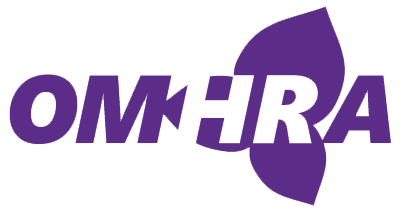
How high is the cost of absenteeism? In Canada, it’s estimated to cost companies $16.6 billion in productivity per year.
However, absenteeism has both hard and soft costs: there are tangible business losses and intangible impacts on morale. Hard, direct costs are quantitative, and can be measured in dollar amounts.
Soft, indirect costs are qualitative. It’s difficult to measure their financial impact, as decreased engagement, delayed workflows, and diminished morale have long-term rather than short-term ramifications.
A lower rate of unscheduled absences corresponds to higher workplace morale, and one of the ways to help improve it is with programs that can help support health and work-life balance. Here’s why.
Burnout is a symptom of a broken system.
While burnout can have numerous personal and professional causes, it manifests acutely in the workplace when employees are exhausted, have lost the motivation to perform their jobs, and see missing work — including a leave of absence or resignation — as their only recourse.
A 2021 study by McKinsey shows 49% of workers say they’re “at least somewhat burned out”. This alarming burnout rate suggests that employers may not be offering their employees adequate flexibility, rest, and care resources at work or as part of their compensation package.
Furthermore, if burnout isn’t recognized and treated proactively, it can lead to more serious mental health issues. This threatens to make absenteeism, and even employee turnover, much more severe. Mental health problems and illnesses account for 30% of short- and long-term disability claims, according to The Mental Health Commission of Canada, and cost the Canadian economy more than $50 billion annually.
Access to mental health care is a necessity.
For years, there’s been a push to end the stigma around mental health. Employers can show leadership by ensuring the workplace is a safe space to speak about these challenges.
One-third of working Canadians assess themselves as having a “high mental health risk”, resulting in anxiety, isolation, and decreased work productivity. Employers can start making a meaningful difference by encouraging candid conversations around mental health, and providing on-demand resources, such as digital materials and health-related consultations.
TELUS Health Virtual Care data shows that more than 70% of virtual health consultations take place during work hours, making it less likely that employees would need to book time off to access these services.1 Virtual Care makes accommodating health-related concerns for employees more convenient, and being able to access care when they first need it can help them feel more empowered at work in the long term.
A strategic benefits survey conducted by Society for Human Resource Management demonstrates the connections between better healthcare, lower absenteeism, and higher productivity. Of the 68% of HR professionals whose organizations offered some type of wellness program, 65% reported that the initiatives were “very effective” or “somewhat effective” in reducing health-related costs.
Work-life balance is imperative for employees.
Work-life balance programs boost company morale. A large part of creating a positive work environment involves trusting employees to take ownership of their time so they can achieve balance and seek support when they need it.
This personal and professional life balance can also be enhanced by an employee assistance program (EAP). A Federal Occupational Health study found that having an EAP led to a 69% drop in absenteeism and a 10% decline in workplace distress, while overall life satisfaction increased by 24%. It’s also effective in delivering immediate, short-term solutions for personal or professional challenges.
Putting people first matters more than ever.
Today, virtual solutions make it easier for organizations to deliver programs and benefits that let employees personalize their care, optimize their time, and invest in their health and wellbeing. Examples include providing virtual access to an on-demand network of healthcare professionals, along with care resources, ancillary services, and digital health platforms that help employees set, measure, and gamify health and wellbeing goals.
Having these solutions streamlined and connected to one another can also help ensure employees can easily navigate those programs to get support where and when they need it.
Discover how TELUS Health can help reduce absenteeism in your organization.
Presented by

Archives
Categories
- Attraction and Recruitment
- Benefits
- Celebrating Success and Recognition
- Change Management
- Coaching and Conflict Resolution
- Culture
- Diversity, Equity and Inclusion
- Emotional Intelligence
- Employee Engagement
- Employee Performance
- Labour Disruption
- Mentoring
- OMHRA activities
- OMHRA Events
- Psychological health and safety of the HR professional
- Recruitment
- Recruitment and Retention
- Retention
- Uncategorized
- Unique ideas for recruiting in a tight job market
- Wellness
Recent Posts
- How Leadership Development Coaching Provides Better Outcomes
- Better Leadership: Focus on a Coach Approach
- Creating a Psychologically Safe Workplace
- Group Health Insurance – The Impact of Preferred Pharmacy Networks on Employees’ Mental Health
- Provide Real Support For Your Mid-Career Team’s Psychological Resilience
